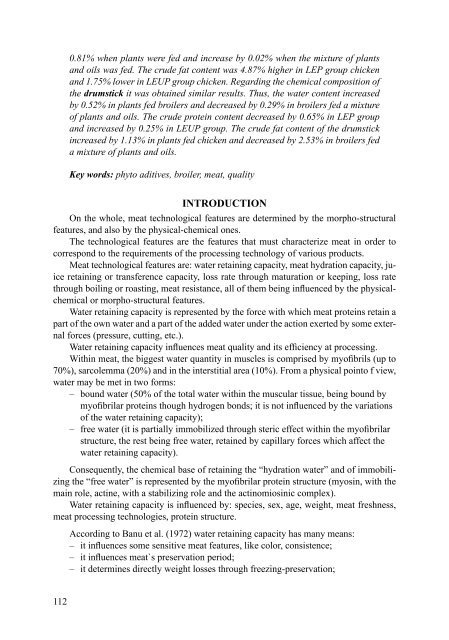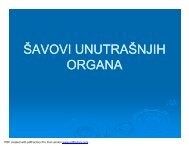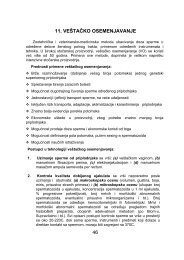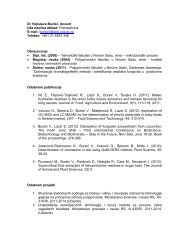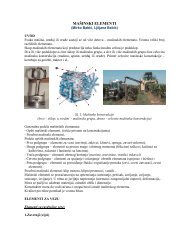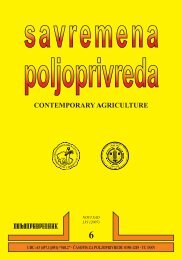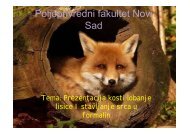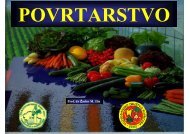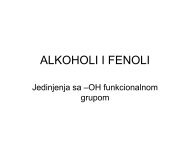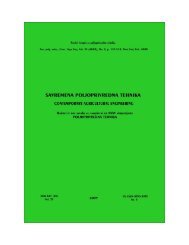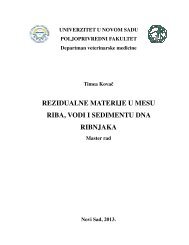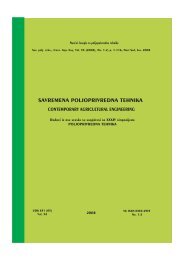2008 Savremena poljoprivreda 57 1-2.indd - Poljoprivredni fakultet ...
2008 Savremena poljoprivreda 57 1-2.indd - Poljoprivredni fakultet ...
2008 Savremena poljoprivreda 57 1-2.indd - Poljoprivredni fakultet ...
Create successful ePaper yourself
Turn your PDF publications into a flip-book with our unique Google optimized e-Paper software.
112<br />
0.81% when plants were fed and increase by 0.02% when the mixture of plants<br />
and oils was fed. The crude fat content was 4.87% higher in LEP group chicken<br />
and 1.75% lower in LEUP group chicken. Regarding the chemical composition of<br />
the drumstick it was obtained similar results. Thus, the water content increased<br />
by 0.52% in plants fed broilers and decreased by 0.29% in broilers fed a mixture<br />
of plants and oils. The crude protein content decreased by 0.65% in LEP group<br />
and increased by 0.25% in LEUP group. The crude fat content of the drumstick<br />
increased by 1.13% in plants fed chicken and decreased by 2.53% in broilers fed<br />
a mixture of plants and oils.<br />
Key words: phyto aditives, broiler, meat, quality<br />
INTRODUCTION<br />
On the whole, meat technological features are determined by the morpho-structural<br />
features, and also by the physical-chemical ones.<br />
The technological features are the features that must characterize meat in order to<br />
correspond to the requirements of the processing technology of various products.<br />
Meat technological features are: water retaining capacity, meat hydration capacity, juice<br />
retaining or transference capacity, loss rate through maturation or keeping, loss rate<br />
through boiling or roasting, meat resistance, all of them being infl uenced by the physicalchemical<br />
or morpho-structural features.<br />
Water retaining capacity is represented by the force with which meat proteins retain a<br />
part of the own water and a part of the added water under the action exerted by some external<br />
forces (pressure, cutting, etc.).<br />
Water retaining capacity infl uences meat quality and its effi ciency at processing.<br />
Within meat, the biggest water quantity in muscles is comprised by myofi brils (up to<br />
70%), sarcolemma (20%) and in the interstitial area (10%). From a physical pointo f view,<br />
water may be met in two forms:<br />
– bound water (50% of the total water within the muscular tissue, being bound by<br />
myofi brilar proteins though hydrogen bonds; it is not infl uenced by the variations<br />
of the water retaining capacity);<br />
– free water (it is partially immobilized through steric effect within the myofi brilar<br />
structure, the rest being free water, retained by capillary forces which affect the<br />
water retaining capacity).<br />
Consequently, the chemical base of retaining the “hydration water” and of immobilizing<br />
the “free water” is represented by the myofi brilar protein structure (myosin, with the<br />
main role, actine, with a stabilizing role and the actinomiosinic complex).<br />
Water retaining capacity is infl uenced by: species, sex, age, weight, meat freshness,<br />
meat processing technologies, protein structure.<br />
According to Banu et al. (1972) water retaining capacity has many means:<br />
– it infl uences some sensitive meat features, like color, consistence;<br />
– it infl uences meat`s preservation period;<br />
–<br />
it determines directly weight losses through freezing-preservation;


